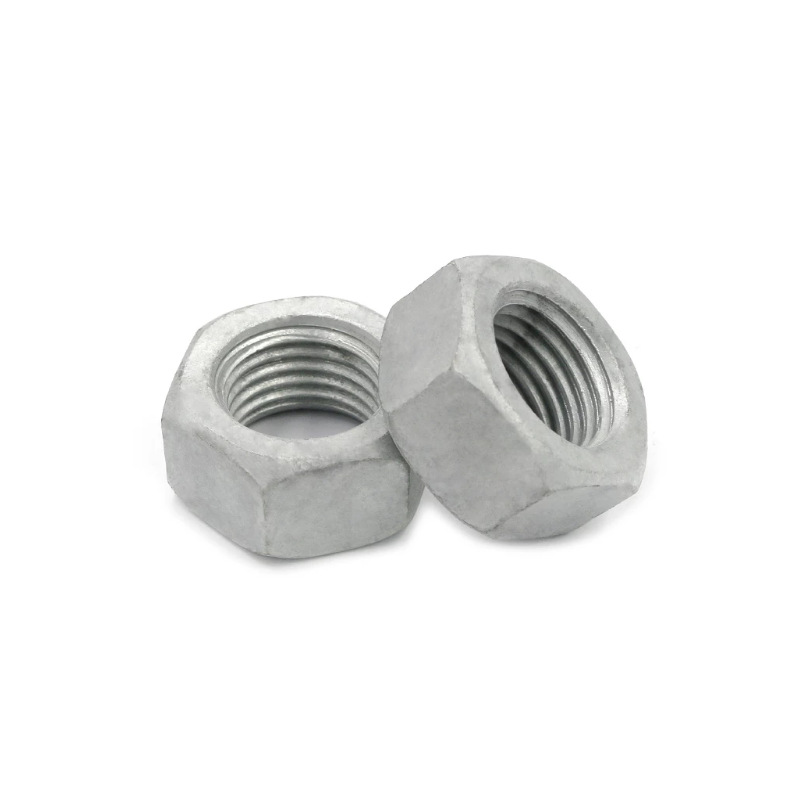

hex nut with flange
10月 . 07, 2024 17:40 Back to list
hex nut with flange
Understanding Hex Nuts with Flanges An Essential Hardware Component
Hex nuts with flanges are essential components in the world of fasteners, widely used in various industries due to their reliability and structural integrity. As a hardware item, they play a critical role in ensuring that mechanical assemblies remain secure and function properly.
What is a Hex Nut with Flange?
A hex nut with a flange is a type of nut characterized by its hexagonal shape and a circular flange that extends from the bottom. The primary purpose of this flange is to provide a larger bearing surface, which distributes the load more evenly and reduces the likelihood of loosening over time. This design is particularly advantageous in applications where vibration is a concern, as the increased surface area helps maintain the nut's position under stress.
Hex nuts are traditionally used to secure components together in conjunction with bolts or screws. The hexagonal shape allows for easy tightening and loosening using a wrench, which makes installation and maintenance straightforward. The addition of a flange enhances the nut's performance, making it a preferred choice in various engineering applications.
Applications of Hex Nuts with Flanges
Hex nuts with flanges are commonly employed in construction, automotive, and manufacturing industries. Their versatility makes them suitable for various applications, including
1. Automotive Construction In vehicles, hex nuts with flanges are often used to secure components such as engines, transmissions, and exhaust systems. Their ability to withstand vibrations and maintain a strong grip is crucial for ensuring the safety and performance of the vehicle.
2. Machinery Assembly Heavier machinery relies heavily on reliable fastening systems. The use of flanged hex nuts allows for secure assembly and reduces the risk of components loosening over time, which is vital for operational efficiency and safety.
3. Structural Engineering In construction, these nuts are used to fasten beams, girders, and other structural elements. The flange helps distribute the load over a larger area, reducing stress on the connected components and enhancing the overall stability of the structure.
4. Electronics In electronic devices, where space is often limited, hex nuts with flanges can be used to securely fasten components without compromising design integrity. Their low profile and secure fastening abilities make them ideal for compact electronic assemblies.
Benefits of Using Hex Nuts with Flanges
hex nut with flange

1. Increased Load Distribution The flange provides a broader bearing surface, allowing for better load distribution. This capability is particularly advantageous in applications where weight and pressure are concerns, as it minimizes stress concentrations.
2. Vibration Resistance The added surface area created by the flange helps improve the nut's grip on the fastened components, making it less prone to loosening due to vibrations. This feature is critical in environments that experience frequent movement or oscillations.
3. Ease of Installation Hex nuts can be easily tightened or loosened with standard tools. The hexagonal shape allows for a straightforward installation process, which can save time and reduce labor costs.
4. Durability Typically made from robust materials such as steel, stainless steel, or nylon, hex nuts with flanges are designed to withstand harsh conditions. Their durability ensures a long lifespan and reliable performance in demanding applications.
Choosing the Right Hex Nut with Flange
When selecting the appropriate hex nut with flange for a specific application, several factors should be considered
1. Material Depending on the environment, different materials may be more suitable. For instance, stainless steel is resistant to corrosion, making it ideal for outdoor applications, while nylon may be preferred in lightweight setups.
2. Size and Thread Type It is crucial to match the size and thread type of the hex nut with the corresponding bolt or screw to ensure compatibility and secure fastening.
3. Load Requirements Understanding the load requirements of the application can help in selecting a nut capable of handling the anticipated stress without failure.
4. Environmental Conditions Consideration of environmental factors—such as temperature, humidity, and exposure to chemicals—will also influence the material choice and design of the hex nut.
Conclusion
Hex nuts with flanges are versatile and robust fasteners essential for many industries. Their unique design enhances load distribution and improves resistance to vibration and loosening, making them indispensable in securing mechanical assemblies. By choosing the right material and size, engineers and technicians can ensure optimal performance and safety in their applications. Understanding these fasteners' characteristics and benefits allows for more informed decisions regarding their usage, ultimately leading to more reliable mechanical systems.
Latest news
-
Premium Fasteners Manufacturer | AI-Driven Solutions
NewsAug.01,2025
-
Hot Dip Galvanized Bolts - Hebei Longze | High Strength, Corrosion Resistance
NewsAug.01,2025
-
High-Strength Hot Dip Galvanized Bolts - LongZe | Corrosion Resistance, Custom Sizes
NewsAug.01,2025
-
Best Self Tapping Screws for Drywall - Fast & Secure Installation
NewsJul.31,2025
-
High-Strength Hot Dip Galvanized Bolts-Hebei Longze|Corrosion Resistance&Customization
NewsJul.31,2025
-
Hot Dip Galvanized Bolts-Hebei Longze Metal Products|Corrosion Resistance&High Strength
NewsJul.31,2025

